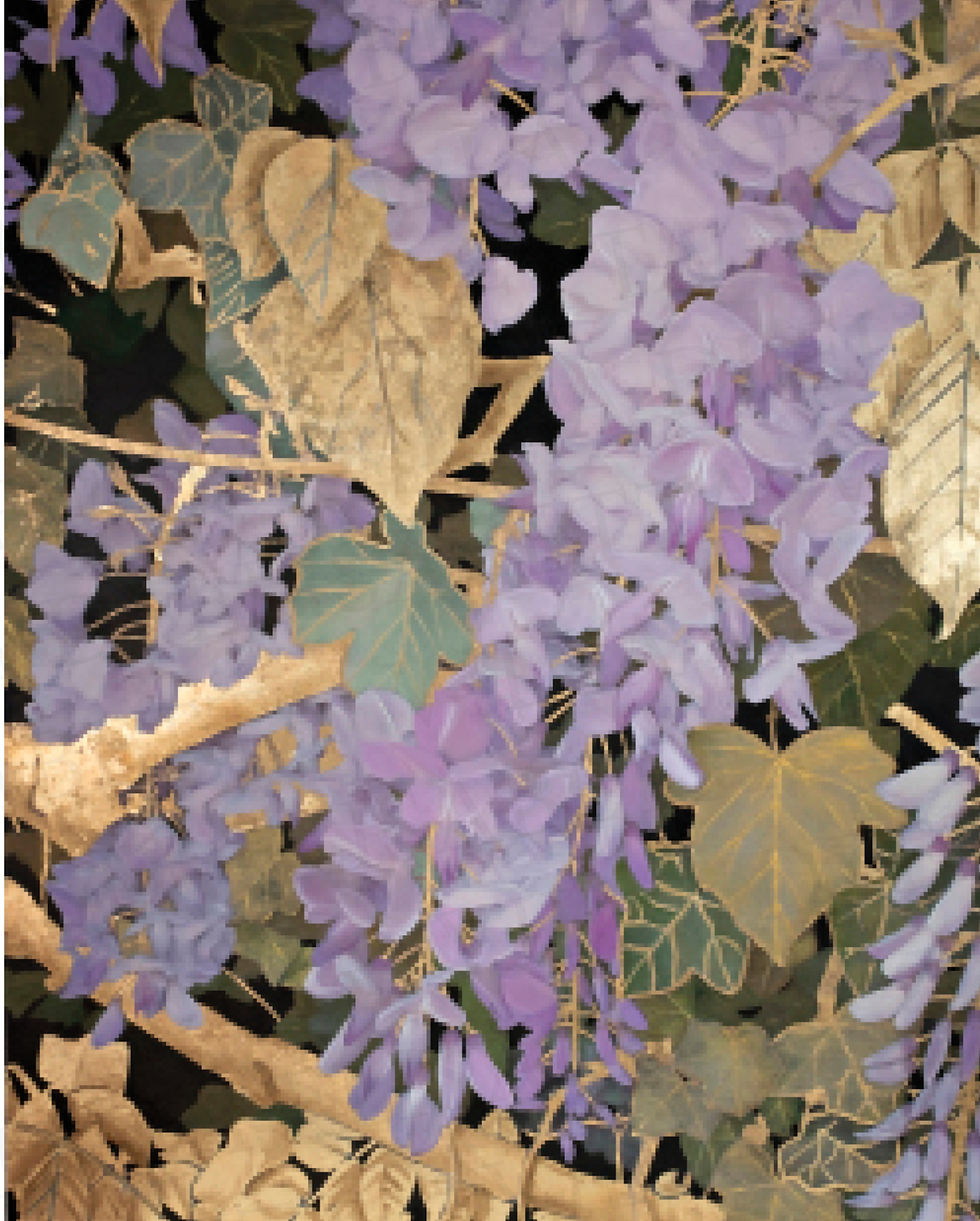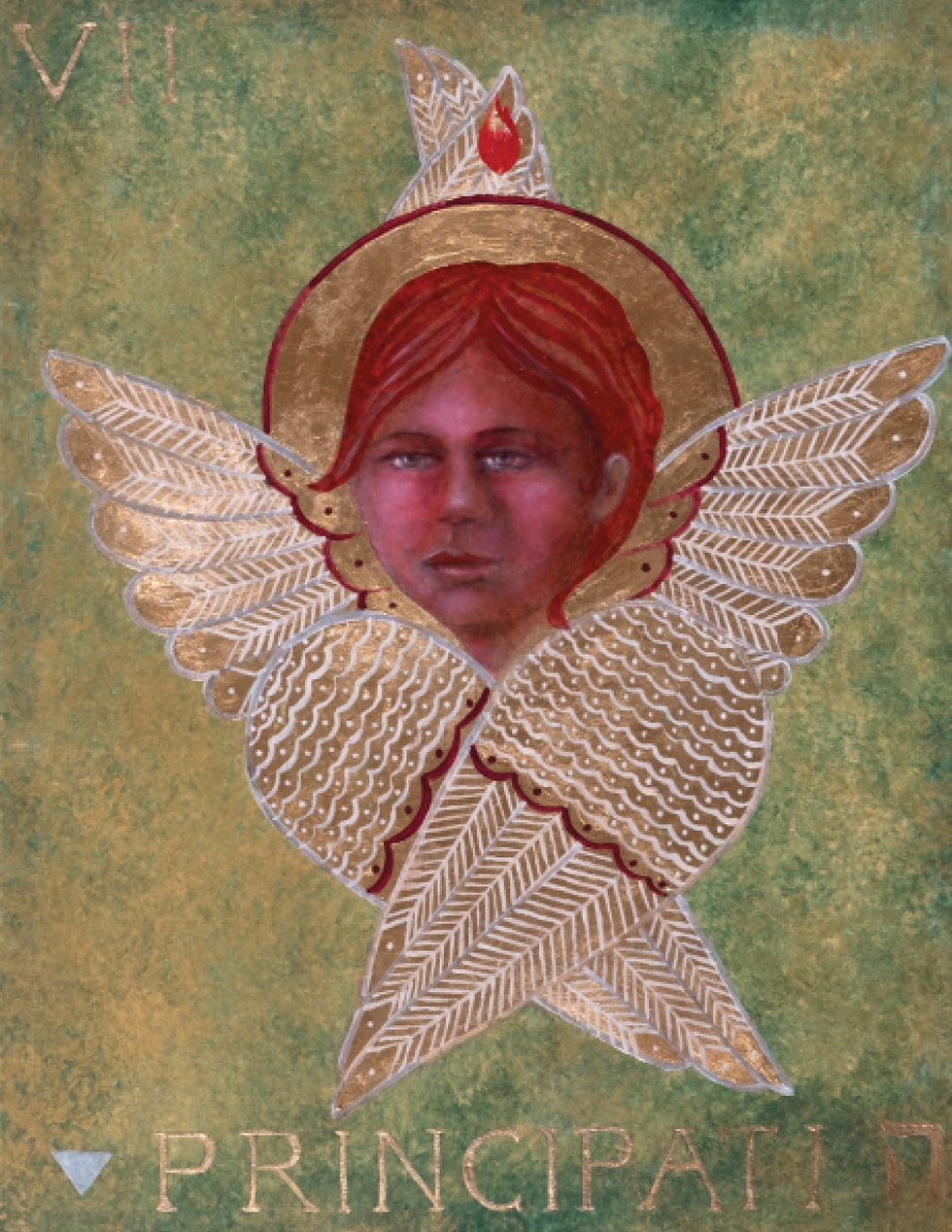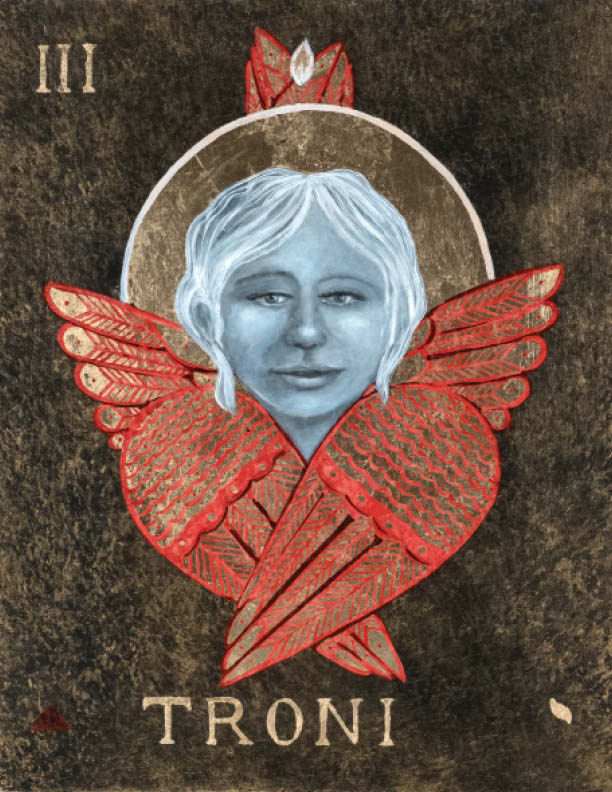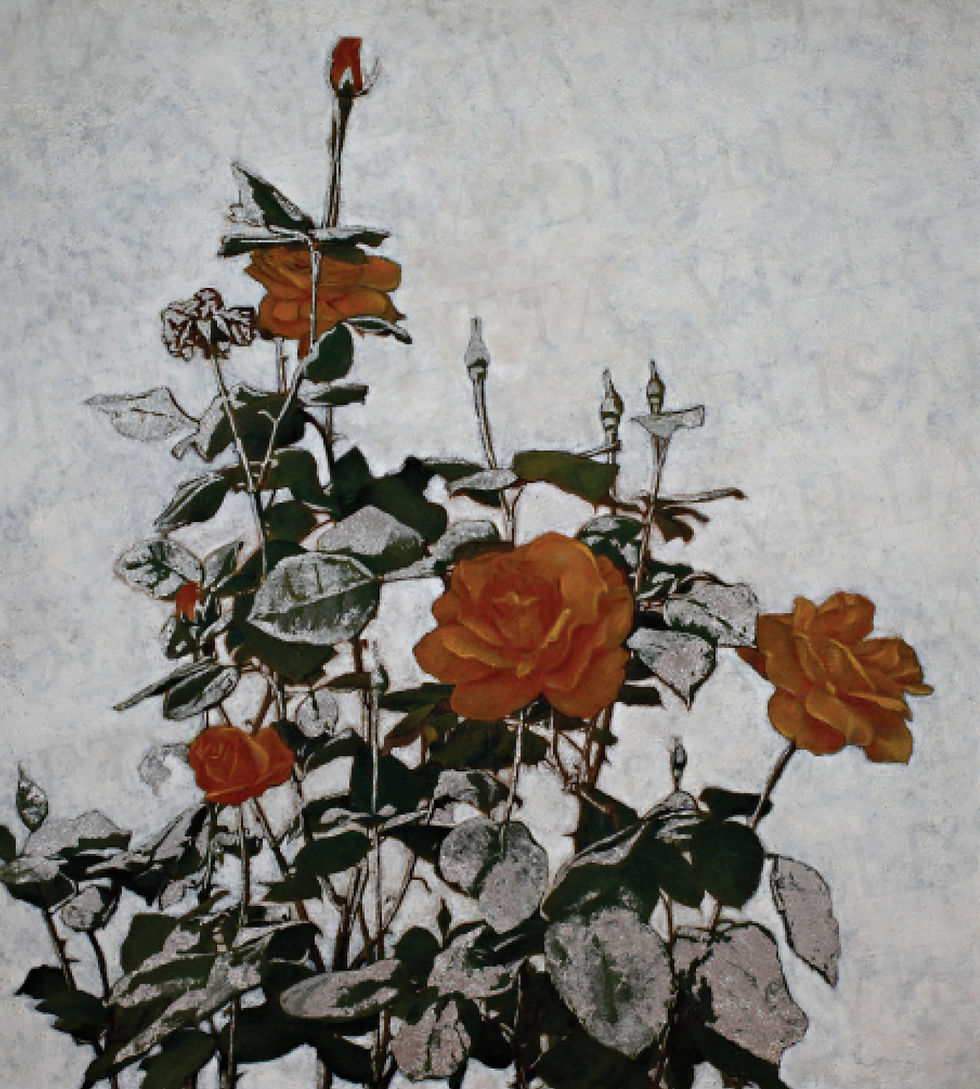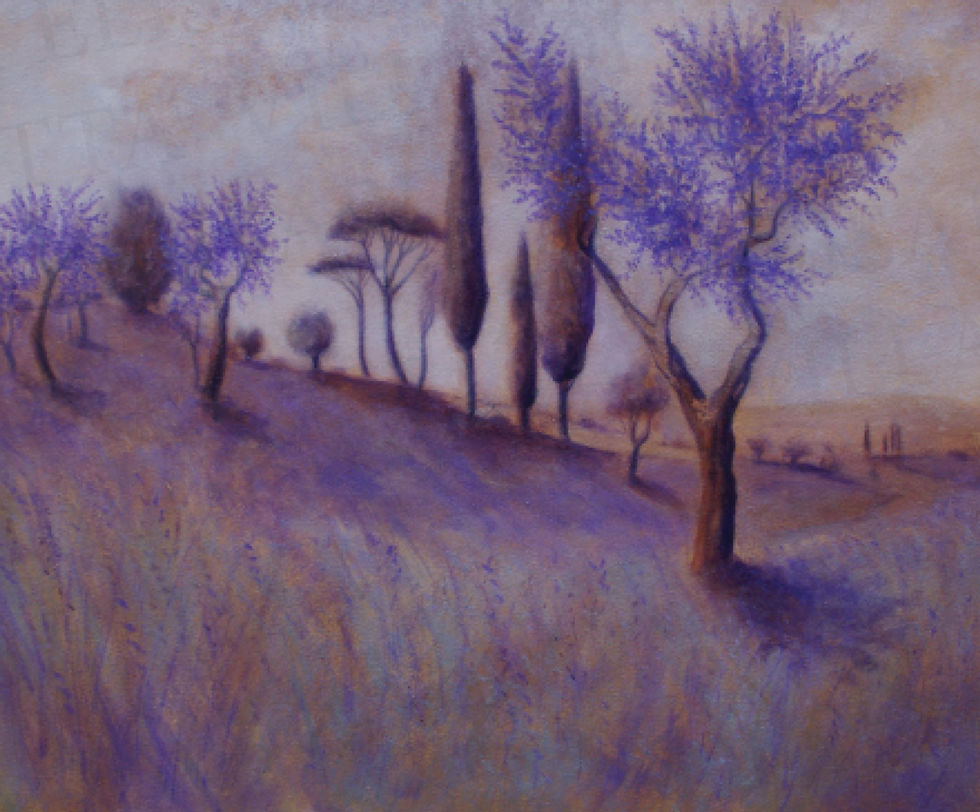
PAOLO PALAZZOLI
.png)
PAOLO PALAZZOLI
Camiore, Italy
Paolo Palazzoli was born in Crema, Italy, on 27 October 1963.
He began to paint at the age of 12, experimenting with oil painting. His art, like his life, has been inspired by a mystical, spiritual quest which translates into a gentle, refined painting style.
His works are present in private collections in Italy, America, China, Germany and Australia and he has had many showings world-wide throughout the years.
Paolo has spent years living and painting in Lucignano, Italy and now resides in Camiore, Italy with his wife and daughter - where he continues to paint, show his work and make music.
Prints of his work, as well as originals are available through Villa di Elisabetta. For more info, see below...
FINE ART GALLERY
ARTICLE

A TRAGIC ENDING...
IGNITES A BEAUTIFUL BEGINNING...
Corriere di Arezzo, Lucignano, Italy - 2006
A NEW PAINTING FOR THE CHURCH OF THE CEMETERY
After the theft of the wooden crucifix in a beautiful ancient church in the small village of Lucignano, Italy, just south of Florence - a Lucignano artist offered to make new work to fill the hollow space.
Many people attended the inauguration...
...
"The Church of the Lucignano Cemetery" has found a new painting called "Jesus on the Altar!"
Three years before, a sixteenth century wooden crucifix was stolen from a small, yet meaningful church in Lucignano, Italy.
The thieves (to this day) are unknown - but clearly to this day did not respect the sacredness os the temple - as a place of peace.
This angered the community - who were saddened and in awe.
It was hard to believe for this small town - a medieval village, tucked between countrysides of sunflower fields and olive trees, that anyone would pilfer or desecrate a place of worship.
However, though saddened, the first thought from the community was "the need to fill the void."
Several solutions were considered...with intense research work by the inexhaustible Monsignor Marini...certainly the most displeased.
(Unfortunately it is not the only theft that this church suffered over the years.)
This is where fortune (or providence) comes into play - coming to the aid of the community was Paolo Palazzoli, of Lucignano (by adoption,) a locally known painter and musician.
The young Palazzoli immediately made himself available to lend a hand to his fellow citizens and the community.
After a few months, the painting came to life and was ready to be placed above the altar...
Hundreds of people witnessed the new painting being hung in the church - above the alter. It was an emotional moment for all - sensing that 'an evil' was being replaced with a work so 'significant and reassuring' - that it left a strong sense of joy and satisfaction throughout the congregation and community.
The new painting displayed an explosion of colours and a clear vision of the triumph of heavenly life over death. Jesus Christ appears in his glory surrounded by holy angels who blow the trumpets.
This work is of considerable size and covers the entire wall above the altar.
It appears to the visitors as a focal point and the achievement of a rewarding goal at the end of our life.
It still stands and is available for viewing in the Church of the Cemetary in Lucignano, Italy.
Osvaldo Tavarnesi
HISTORY OF SHOWINGS
2024
2023
2022
2021
2019
2018
2017
2016
2015
2012
2010
Collective show of painting and sculpture “L’Arte Dichiarazione del Sentire Dell’Animo Umano,” Palazzo Bastogi, Firenze, Italy
Collective show of painting and sculpture “L’Arte Come Fusione di Emozioni e Poesia” Centro Multimediale “Mario Cacace” - ”Eden Paradiso” di Anacapri-Isola di Capri/Island of Capri, Italy
Collective show of painting and sculpture “L’Arte Connette i Sensi All’Infinito”
Museo della Scuola Grande di San Teodoro - San Marco, Venezia/Venice, Italy
Collective show of painting and sculpture "L'Arte Toglie il Velo per Disvelare il Vero,” Palazzo Pontificio Maffei Marescotti, Galleria La Pigna - Citta' Del Vaticano/Vatican City, Rome, Italy
Solo painting “Immacola Ta” Pietrasanta, Lucca, Italy and Piazza San Martino, Duomo San Martino Church, San Lucca, Italy
"L’Eterna Bellezza", Collective painting show, Anacapri - Island of Capri, Italy
“Realta’come Sognate”, Campanile del Duomo, San Martino, Pietrasanta, Lucca, Italy, with Collections by Annette Amoroso
Solo painting “Palazzo Tori”, Camaiore, Lucca, Italy
Solo painting “King of Games”, Europa Gallery, Lido di Camaiore, Lucca. Italy
Solo painting “Reality as you dDeam”, Piazza San Martino, Pietrasanta, Lucca, Italy
“Madonna del Sole”, collective show of painting and sculpture, City Hall, Pietrasanta, Lucca, Italy
Nag Art Gallery,“ The journey of Man Between Art and Faith from Ugo Guidi to Igor Mitoraj.” Salone Donatello, Church of Santo Spirito, Florenza/Florence, Italy
“Lights and Colors and Form of Modern Art”, San Vidal Art Center, Venezia/Venice, Italy
Solo painting and video art show, Rosini Theatre, Lucignano, Arezzo, Italy
“Christmas in Naples”, Collective painting show at “Le Porte”, Modern Art Gallery,Naples.
"He Art”, When Art becomes Heart, solo painting show, Gallery Amy-D’Arte Spazio, Milan
“Visual Arts”, Collective painting show, Rotonda Barbetti, Florence.
"He Art”, When Art becomes Heart, solo painting show, Gallery Amy-D’Arte Spazio, Milan, Italy
“Italian Knots”, exhibition of Ties in the World, Ministry of Foreign Affairs, Colosseum Association, Roma/Rome, Italy
Palazzo Taranco, Montevideo, Uruguay and Mar del Plata, Argentina
Painting Exhibition, Museo Cassero, Monte San Savino, Arezzo, Italy
2009
“Amoroso’s Collections”, ”Modern Mysticism”, West Lake Village, California, USA
“Artists Showcase”, Collective Painting Show, Chianciano Terme, Siena, Italy
2008
International Art Festival, Collective Show of Painting and Sculpture, Palazzo Vescovile, Montepulciano, Siena, Italy
“Landscapes Collections”, Solo Painting Show, Lucignano, Arezzo, Italy
"Decorations and Trompe d’Ceil in Villa", Hawaii Islands Oahu and Maui, USA
2007
2006
2004
2000
“Fend Shui Collection”, Casa Nuova Italian Restaurant, Shanghai, China
"Jesus in the Glory”, Church of Lucignano, AR, Italy
Painting Exhibition “Modern Mysticism”, Waterlily Cafe’, Topanga Canyon, Los Angeles, USA
Solo show of painting, Municipality of Lucignano, Arezzo, Italy
PAOLO'S SHOWINGS
AN ART CRITIC SPEAKS
“Fra tradizione e innovazione” Volume VI
Filed to Library Thomas J. Watson
Metropolitan Museum, New York, NY, USA
It would be improper and undue to define Paolo Palazzoli's painting as dryly postmodern, in whose creative sensitivity significant figurative instances are concentrated that escape the derivative logics that properly belong to the postmodern climate, to recall, rather, content densities of high moral depth.
On the level of the mere empirical emergence of a syntactic notation of the arrangement of Palazzoli's creative imagination in a figurative construction clearly available to the transfiguration of reality in phantasmatic longing, we cannot fail to recognize that a sort of critical approach to the logic of a creativity that rediscovers the "values" of painting as such, is reasonably evocable. And all this, evidently, on the condition of calling into question the significance of a dispositive gesture that knows how to put in a consequential and semantically convincing line the logical and proactive arsenal of a symbolic deliberation fully aware of its own opportunities and willing to expend itself on the terrain of a figuration rich in ideas of great psychological and emotional suggestion.
One almost gets the impression, at times, that the artist does not intend to let the fullness of his figurative skills emerge which are certainly of great depth, preferring to let a sort of definitive impertinence spread over his images which almost evokes the atmospheres of a sensibility that we would define as "post-clarist", I mean, with this name, to critically highlight the perimeter of a further segment to be placed alongside those of Anachronism, Citationism, Neo-Mannerism and Transavantgarde itself, the Neuen Wilden and the New-New, which are all variations on the theme of the broader postmodern climate.
What is particularly convincing in Palazzoli's painting is his availability for meticulous and productive investigation of the data, an undertaking to which he seems to approach himself with great sensitivity and respect for things: for those things of which he knows how to give the user a 'apparently alchemical image, almost from the past and, instead, only apparently commensurable with the archetypes, for example, Art Nouveau, and, in reality', belonging to the dynamics of a figuration fully aware of the achievements and results of all that creative practice of a figurative nature which inaugurated a season of great importance, for example, in the 60s, with the research of "Realism of denunciation" and with the specific action, for example, of groups such as Equino Cronica or other individual personalities .
Works such as "Foresight", for example, are proposed as paradigmatic of a figurative consistency which seems to want to overflow into the symbolic order and which, instead, attest exactly the opposite: that is, the artist's determination to provide a symbolic charge to the own image, contributing to making the message full of meaningful testimonies of humanity.
And, if other examples were needed, it would be appropriate to invoke the "Jesus Christ in Glory" of the Central Altar of the Church of the Lucignano Cemetery, in the province of Arezzo, where our pictorial sensitivity reaches results of extreme delicacy formal, obtaining objective results of figurative rendering which place his painting in a sort of timeless sphere, certainly mystical, but not for this reason historically absent, the same sphere in which the painting of Angelico, so profoundly ascetic and also so profoundly attentive to the dynamics of modernity, which, in her time, marked the transition from the "perspectiva medievalis" to the properly "artificialis" of new compositional research.
Prof. Rosario Pinto, Critico E Storico D'Arte/Art Critic
Prof. na Escola Superior Saude Santarem
Escola Superior Saude Santarem
Santarém, Portugal


